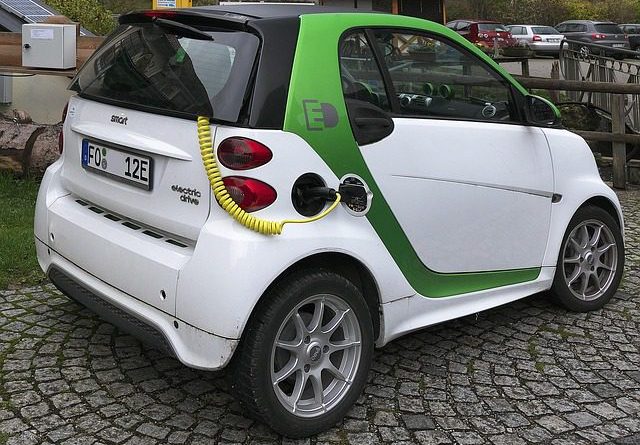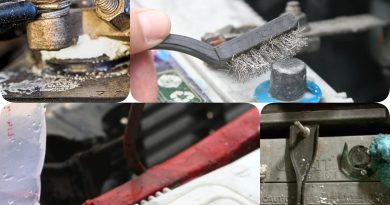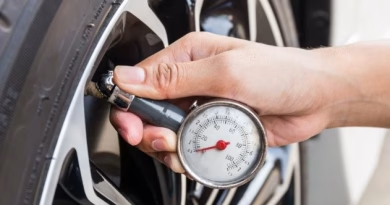How to Jumpstart a Dead Car Battery in 5 Easy Steps
What you need to know, Learn and Master about safe car battery jumpstart in 5 easy steps. Don’t miss this! Follow Afchargetech’s guide and avoid getting stranded on the road!
I think you that there’s nothing more frustrating than being stuck with a dead car battery on the road, or especially when you’re in a hurry or far from help. Whether it’s a Monday morning rush to work or a family emergency, knowing how to safely jumpstart your car battery is an essential and important skill every driver should master.
At Afchargetech company, we’ve responded to countless emergency calls from drivers stranded with dead batteries across Nigeria and it’s what we do everyday. While we’re always ready to help, we also believe in empowering drivers with the knowledge to handle these situations independently when possible that’s why we are always called experts or professional.
This listed guide will teach you the correct, safe way to jumpstart a dead car battery in just five simple steps. We’ll also cover important safety considerations, what tools you need, and when to call for professional help instead of attempting a DIY jumpstart.
Before we dive in: If you’re experiencing repeated battery failures, you might want to check out our guide on recognizing the signs of a dying battery to prevent future emergencies.
Understanding Why Car Batteries Die
Before jumping into the solution, it’s helpful to understand why batteries fail. Car batteries can die for various reasons:
Common Causes of Dead Batteries:
- Leaving lights, radio, or other electronics on overnight
- Extreme weather conditions (both hot and cold)
- Aging battery (typically after 3-5 years)
- Faulty alternator not charging the battery while driving
- Parasitic electrical drains from aftermarket accessories
- Corroded terminals blocking electrical flow
Signs Your Battery is Completely Dead:
- No lights on the dashboard when you turn the key
- Complete silence when attempting to start (no clicking sounds)
- Interior lights won’t turn on
- Remote key fob doesn’t unlock the car
- Digital clock has reset to 12:00
Essential Tools and Safety Equipment
Having the right tools makes all the difference between a quick fix and a dangerous situation. Here’s what you’ll need:
Required Equipment:
- Heavy-duty jumper cables (at least 12 feet long, 10-gauge wire minimum)
- A donor vehicle with a good 12-volt battery (or portable jump starter)
- Work gloves to protect your hands
- Safety glasses to protect your eyes from sparks
- Wire brush for cleaning corroded terminals (if needed)
- Flashlight or phone light for working in low-light conditions
Optional but Recommended:
- Portable jump starter (eliminates need for donor vehicle)
- Battery terminal cleaner or baking soda solution
- Multimeter to test battery voltage
- Emergency contact numbers (including Afchargetech: +9127256156)
Step 1: Safety First – Prepare Both Vehicles
Safety should always be your top priority when dealing with car batteries. Automotive batteries contain sulfuric acid and can produce explosive gases, especially when damaged or overheated.
Positioning the Vehicles:
- Park the donor vehicle close enough so jumper cables reach both batteries comfortably
- Turn off both engines completely – no idling
- Engage parking brakes on both vehicles
- Turn off all electrical accessories (lights, radio, AC, phone chargers)
- Put automatic transmissions in Park and manual transmissions in Neutral
Safety Checks:
- Inspect both batteries for cracks, leaks, or swelling
- Check for corrosion on terminals (white, blue, or green buildup)
- Ensure adequate ventilation – don’t jumpstart in enclosed spaces
- Remove any metal jewelry that could cause electrical shorts
- Keep bystanders at a safe distance especially children
Warning Signs to Stop Immediately:
- Rotten egg smell (hydrogen sulfide gas)
- Visible damage to battery case
- Leaking battery fluid
- Extremely hot battery (let it cool first)
Step 2: Identify Battery Terminals and Connect Cables
This is the most critical step where many people make dangerous mistakes. The order of connection matters significantly for safety and effectiveness.
Locating Battery Terminals:
Most car batteries have clearly marked positive (+) and negative (-) terminals. If the markings are unclear:
- Positive terminal is usually larger and may have a red cover
- Negative terminal is typically smaller and may have a black cover
- Consult your owner’s manual if you’re unsure
Proper Connection Sequence:
Remember: Red to Dead, Red to Donor, Black to Donor, Black to Ground
- First Red Cable: Connect to the positive (+) terminal of the DEAD battery
- Second Red Cable: Connect to the positive (+) terminal of the DONOR battery
- First Black Cable: Connect to the negative (-) terminal of the DONOR battery
- Second Black Cable: Connect to a grounded metal surface in the dead car’s engine bay
Why Not Connect Both Black Cables to Battery Terminals?
Connecting the final black cable to the dead battery’s negative terminal can cause dangerous sparks near the battery. These sparks can ignite battery gases, potentially causing an explosion. Instead, connect to:
- Unpainted metal engine block
- Metal engine mount
- Metal ground strap
- Any solid metal part away from the battery
Step 3: Start the Donor Vehicle and Build Charge
Now that connections are secure, it’s time to begin the charging process.
Starting the Donor Vehicle:
- Start the donor car’s engine and let it run at idle
- Allow 2-3 minutes for current to flow into the dead battery
- Gently rev the engine to 2,000 RPM for 30 seconds (optional)
- Keep the donor vehicle running throughout the process
What’s Happening During This Step:
The donor battery and alternator are sending electrical current through the jumper cables to the dead battery. This process begins charging the dead battery and may provide enough power for the starter motor to engage.
Signs of Successful Charging:
- Dashboard lights may flicker on in the dead vehicle
- You might hear electrical systems activating
- The dead battery may feel slightly warm (normal)
If Nothing Happens:
- Check all cable connections are tight
- Ensure donor vehicle is running
- Try revving the donor engine slightly
- Wait an additional 2-3 minutes
Step 4: Attempt to Start the Dead Vehicle
This is the moment of truth. If you’ve followed the previous steps correctly, your dead vehicle should start.
Starting Procedure:
- Turn the key in the dead vehicle with confidence
- If it starts immediately – great! Let it run for a few minutes
- If it cranks slowly – turn off, wait 2 more minutes, try again
- If nothing happens – check connections and wait longer
- If it makes clicking sounds – the battery may be severely damaged
Success Indicators:
- Engine turns over and starts normally
- Dashboard lights illuminate properly
- No unusual sounds or smells
- Vehicle runs smoothly at idle
If the Vehicle Won’t Start:
Don’t panic. Try these troubleshooting steps:
- Double-check all connections – ensure they’re tight and clean
- Wait 5-10 minutes for more charging time
- Try starting 2-3 more times with 30-second intervals
- Check for corroded terminals that may need cleaning
When to Call for Professional Help:
- After 3-4 unsuccessful attempts
- If you smell rotten eggs or see battery damage
- If the donor vehicle begins running poorly
- If you’re unsure about any step in the process
Step 5: Safely Disconnect Cables in Reverse Order
Once the dead vehicle is running, resist the urge to quickly disconnect everything. Proper disconnection prevents electrical damage and ensures safety.
Disconnection Sequence (Reverse Order):
- Remove black cable from ground (engine block of previously dead car)
- Remove black cable from donor battery negative terminal
- Remove red cable from donor battery positive terminal
- Remove red cable from revived battery positive terminal
Important Disconnection Tips:
- Keep engines running during disconnection
- Don’t let cable clamps touch each other or any metal surfaces
- Store cables properly to prevent tangles
- Let the revived vehicle run for at least 20-30 minutes
After the Jumpstart: Critical Next Steps
Successfully jumpstarting your battery is just the beginning. What you do next determines whether this was a one-time fix or if you’ll face the same problem again soon.
Immediate Actions:
- Drive for 20-30 minutes to allow the alternator to recharge the battery
- Avoid stopping the engine for at least 30 minutes
- Turn off all non-essential electronics during the drive
- Monitor dashboard warning lights for charging system issues
Testing Your Battery Health:
Once you’ve driven for 30 minutes, test your battery:
- Turn off the engine and wait 5 minutes
- Try starting the car – it should start normally
- Check voltage with a multimeter (should read 12.6V when off)
- If it won’t restart – your battery likely needs replacement
When to Replace vs. Recharge:
Replace the battery if:
- This is the second jumpstart in a month
- The battery is over 3 years old
- Voltage drops below 12.4V after driving
- You notice any signs of a dying battery
The battery may just need charging if:
- You recently left lights on overnight
- It’s extremely cold weather
- The car hasn’t been driven in weeks
- Voltage recovers to 12.6V after driving
Common Jumpstart Mistakes to Avoid
Even experienced drivers sometimes make these dangerous or costly mistakes:
Connection Errors:
- Never connect positive to negative – this can destroy electrical systems
- Don’t connect final black cable to dead battery – risk of explosion
- Avoid touching cable clamps together – creates dangerous sparks
- Don’t reverse the connection order – can damage electronics
Safety Mistakes:
- Never smoke near batteries – hydrogen gas is explosive
- Don’t attempt jumpstart on damaged batteries – call professionals
- Avoid jumpstarting in enclosed spaces – ensure proper ventilation
- Don’t skip safety gear – always wear gloves and eye protection
Procedural Errors:
- Don’t rush the process – patience prevents mistakes
- Never skip the charging time – 2-3 minutes minimum
- Don’t immediately disconnect after starting – let it run
- Avoid repeatedly trying to start – can damage the starter motor
Alternative Solutions: Portable Jump Starters
While traditional jumper cables require a donor vehicle, portable jump starters offer independence and convenience. These compact devices have revolutionized emergency battery assistance.
Advantages of Portable Jump Starters:
- No need for another vehicle – work anywhere
- Safer connections – reduced risk of incorrect hookup
- Additional features – often include USB charging, LED lights, air compressors
- Compact storage – fit in glove compartment or under seat
- Multiple uses – can charge phones, tablets, laptops
Choosing the Right Portable Jump Starter:
- Peak amperage – should exceed your engine’s requirement
- Battery type – lithium-ion offers better performance
- Build quality – heavy-duty clamps and cables
- Safety features – reverse polarity protection, overcharge protection
- Brand reputation – stick with established manufacturers
Afchargetech Recommendation: We stock professional-grade portable jump starters suitable for vehicles from motorcycles to large trucks. Visit our showroom or contact us for personalized recommendations based on your specific vehicle needs.
When to Call Professional Help
While jumpstarting is often a DIY task, some situations require professional assistance:
Call Afchargetech Immediately If:
- Battery shows physical damage (cracks, swelling, leaks)
- You smell rotten eggs or see unusual smoke
- Multiple jumpstart attempts fail despite proper procedure
- You’re uncomfortable with any step – safety first
- Weather conditions are dangerous (heavy rain, extreme heat)
Our Emergency Services Include:
- 24/7 roadside assistance via WhatsApp (+9127256156)
- Professional battery testing with advanced diagnostic equipment
- On-site battery replacement with proper disposal of old batteries
- Alternator and charging system diagnosis if problems persist
- Mobile service – we come to your location anywhere in Nigeria
Prevention: Avoiding Future Battery Failures
The best jumpstart is the one you never need. Here are proven strategies to extend your battery life and prevent unexpected failures:
Regular Maintenance:
- Clean terminals monthly with baking soda solution
- Check battery water levels (for serviceable batteries)
- Inspect for corrosion and treat immediately
- Ensure tight connections – loose terminals cause problems
- Test voltage quarterly with a multimeter
Driving Habits That Help:
- Take longer drives occasionally to fully charge the battery
- Don’t leave accessories on when engine is off
- Use a battery tender for vehicles stored long-term
- Avoid extreme temperature exposure when possible
- Address charging system issues immediately
Warning Signs to Watch For:
- Slow engine cranking – especially on cold mornings
- Dashboard lights dimming during startup
- Electrical accessories malfunctioning intermittently
- Battery age approaching 3 years – start planning replacement
- Unusual smells from the engine bay
The Cost of Being Prepared
Investing in proper equipment and knowledge pays dividends in convenience, safety, and cost savings:
Equipment Costs:
- Quality jumper cables: ₦5,000-₦12,000
- Portable jump starter: ₦25,000-₦60,000
- Basic multimeter: ₦3,000-₦8,000
- Safety equipment: ₦2,000-₦5,000
- Total investment: ₦35,000-₦85,000
Compare to Emergency Costs:
- Towing service: ₦15,000-₦30,000 per incident
- Emergency battery replacement: 50-100% markup over retail
- Lost productivity: Varies by individual
- Safety risks: Priceless peace of mind
Environmental Considerations
Proper battery handling isn’t just about safety – it’s about environmental responsibility:
Eco-Friendly Practices:
- Recycle old batteries at authorized centers
- Dispose of battery acid properly (never down drains)
- Choose quality batteries that last longer
- Maintain existing batteries to extend lifespan
- Support businesses with environmental certifications
Afchargetech Commitment: We properly recycle all old batteries and partner with certified disposal facilities to protect Nigeria’s environment for future generations.
Conclusion: Master Your Battery Emergencies
Knowing how to safely jumpstart a dead car battery transforms you from a helpless victim into a confident problem-solver. This skill provides peace of mind for you and the ability to help others in need.
Remember the key principles:
- Safety first – never rush battery procedures
- Proper connections – red to dead, red to donor, black to donor, black to ground
- Patience – allow time for charging before attempting to start
- Professional help – when in doubt, call experts
While this guide prepares you for most battery emergencies, remember that repeated battery failures often indicate underlying issues that require professional diagnosis. Don’t let a failing battery leave you stranded – be proactive about testing and replacement.
Ready to Be Prepared? Visit Afchargetech.com to shop for quality jumper cables, portable jump starters, and professional battery testing services. Our expert technicians are standing by to help with all your automotive power needs.
Emergency Assistance: Save our WhatsApp number (+9127256156) for 24/7 roadside assistance. When you’re stranded, we’re just a message away.
Learn More: Subscribe to our YouTube channel @Afchargetech for video tutorials, product reviews, and automotive tips that keep you moving safely.
Don’t wait for the next battery emergency to catch you unprepared. Equip yourself with knowledge, tools, and professional support from Nigeria’s trusted automotive battery experts.
Related Articles:



